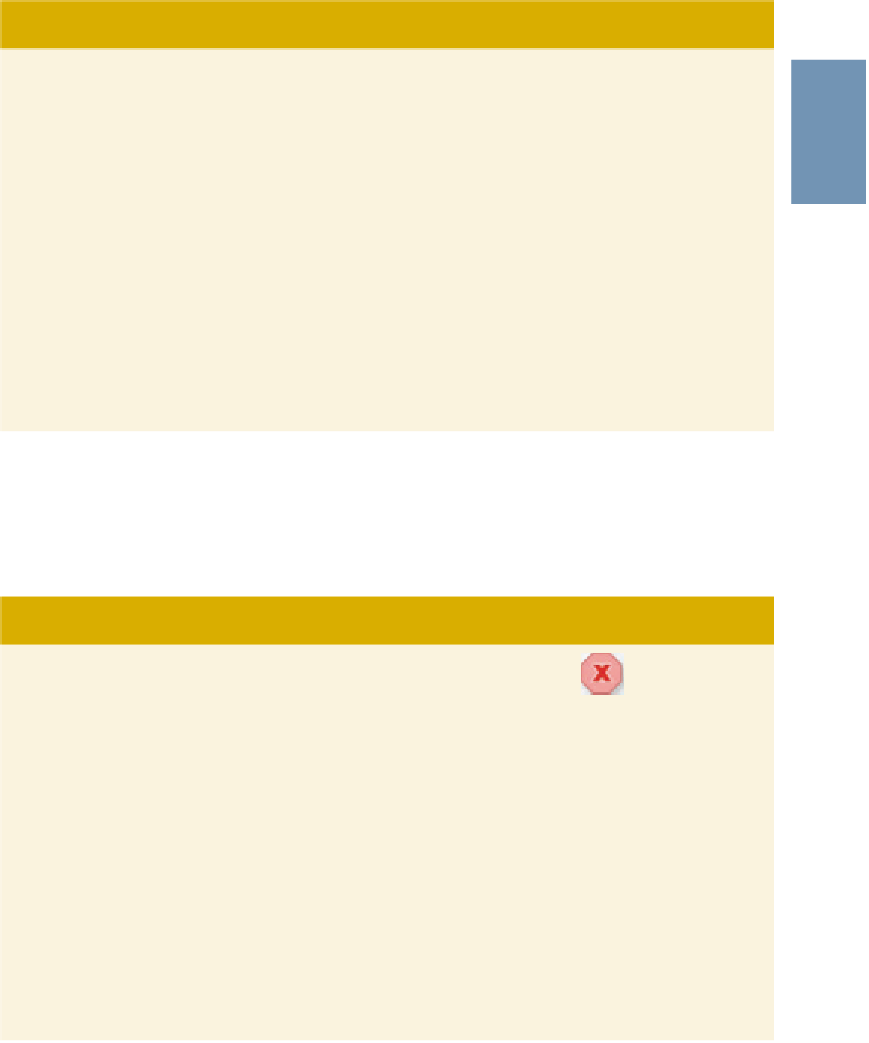Java Reference
In-Depth Information
The method
showMessageDialog
has four parameters, which are described in Table 3-3.
TABLE 3-3
Parameters for the Method
showMessageDialog
Parameter
Description
parentComponent
This is an object that represents the parent of the
dialog box. For now, we will specify the
parentComponent
to be
null
, in which case
the program uses a default component that causes
the dialog box to appear in the middle of the
screen. Note that
null
is a reserved word in Java.
3
messageStringExpression
The
messageStringExpression
is
evaluated and its value appears in the dialog box.
boxTitleString
The
boxTitleString
represents the title of
the dialog box.
messageType
An
int
value representing the type of icon that will
appear in the dialog box. Alternatively, you can use
certain
JOptionPane
options described below.
Table 3-4 describes the options of the
class
JOptionPane
that can be used with the
parameter
messageType
. The option name is shown in bold. Examples 3-9 through 3-11
illustrate these options.
TABLE 3-4
JOptionPane
Options for the Parameter
messageType
messageType
Description
The error icon,
, is displayed in
JOptionPane.ERROR_MESSAGE
the dialog box.
The information icon,
,is
JOptionPane.INFORMATION_MESSAGE
displayed in the dialog box.
JOptionPane.PLAIN_MESSAGE
No icon appears in the dialog box.
The question icon,
, is displayed
JOptionPane.QUESTION_MESSAGE
in the dialog box.
The warning icon,
, is displayed
JOptionPane.WARNING_MESSAGE
in the dialog box.















Search WWH ::

Custom Search